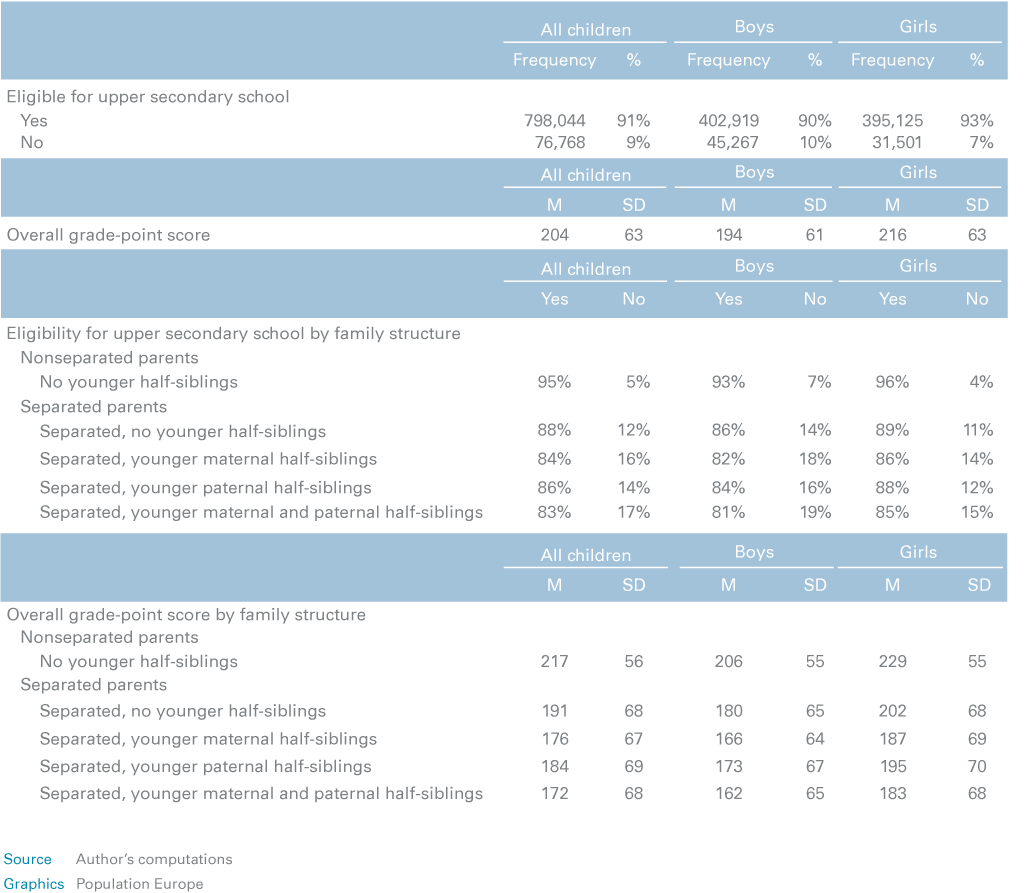Mixed findings
It is the latter type of family that, according to the existing research, seems to be the most problematic for family functioning and children outcomes. However, evidence is still scarce and the conclusions of the existing research on family functioning in blended families are generally mixed. Some studies show that the presence of a half-sibling negatively affects the stepmother–stepchild relationship and positively affects the stepfather–stepchild relationship. Other results show that there is no negative effect on the stepmother–stepchild relationship after the birth of a half-sibling. The reason for the mixed findings could be that to date, only a handful of published studies exist that analyze child outcomes from a sibling-structure perspective, most of them based on data from the United States.
In his study, Jani Turunen analyzes educational outcomes of adolescents who have experienced the birth of a half-sibling by using data from Swedish administrative registers. The sample consists on all biological children of women in Sweden who finished compulsory education between the years 1998 and 2007. The author explored two outcomes related to educational success: The first indicator is based on the child’s eligibility to continue to upper secondary school. The second, and more nuanced measure, is the child’s overall grade score (Table 1).

Table 1: Educational Outcomes by Child’s Sex and Family Structure
Complexity might add stress
The results point in the same direction as previous analyses: Children with younger half-siblings have lower educational outcomes than children in other family constellations. Both the adolescent’s eligibility for upper secondary school and the overall grade score are associated with family structure. Living in a family with half-siblings is negatively associated with school results, even when considering any effects that might be due to the separation of the biological parents. This suggests that the added complexity might add stress to the life of the adolescent or affect access to parental resources and socialization in general.
School results are affected differently, depending on the number and age of half-siblings and whether they are born to a stepmother or a stepfather, yet these effects are not large enough to lead to differentials in failing ninth grade. Whilst parental separation itself affects boys and girls alike, girls experience more stress by a new half-sibling in a post separation family. However, these gender differences are also very small.
These findings strengthen previous evidence by showing that children and adolescents in the Nordic countries seem to be similarly affected by family structure changes as are children in the United States, regardless of a completely different welfare state setting. Absolute levels of economic hardship cannot explain the lower well-being for children in post-separation family types.
This PopDigest is also available in French, Spanish and German.

*This PopDigest has received funding from the European Union's Seventh Framework Programme (FP7/2007-2013) under grant agreement n° 320116 for the research project FamiliesAndSocieties.
FamiliesAndSocieties (www.familiesandsocieties.eu) has the aim to investigate the diversity of family forms, relationships and life courses in Europe, to assess the compatibility of existing policies with these changes, and to contribute to evidence-based policy-making. The consortium brings together 25 leading universities and research institutes in 15 European countries and three transnational civil society organizations.